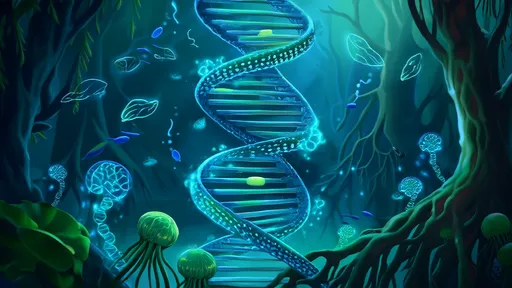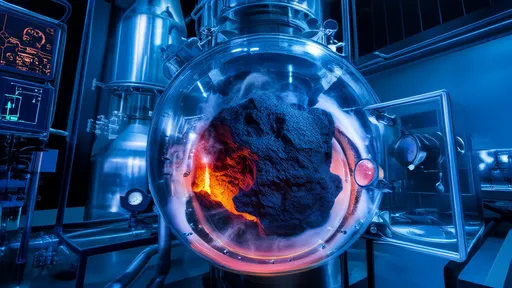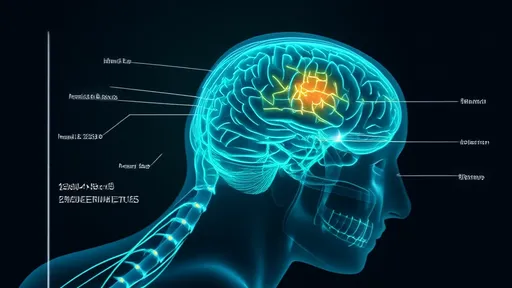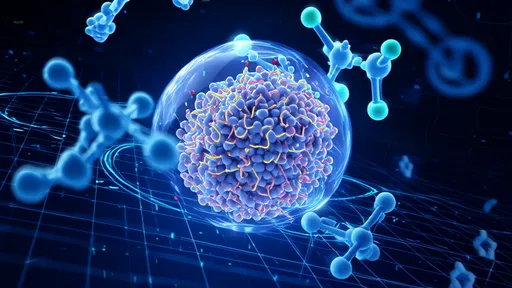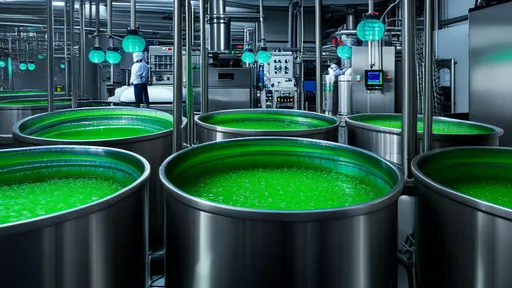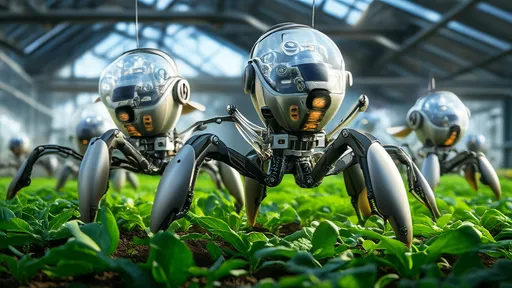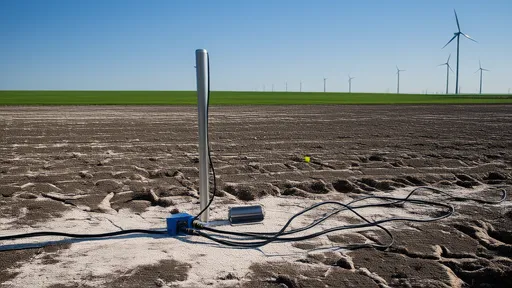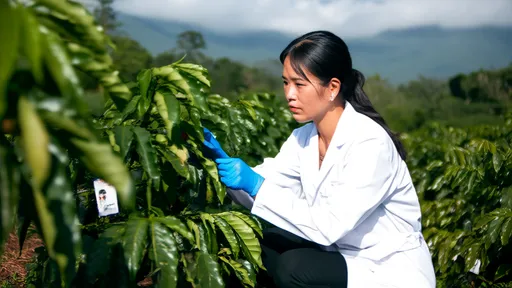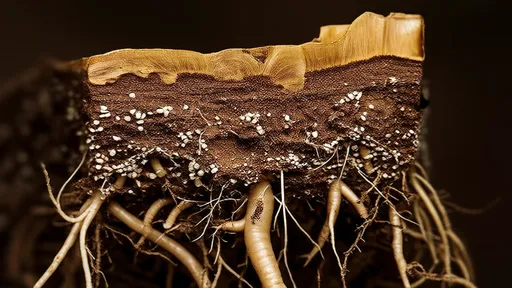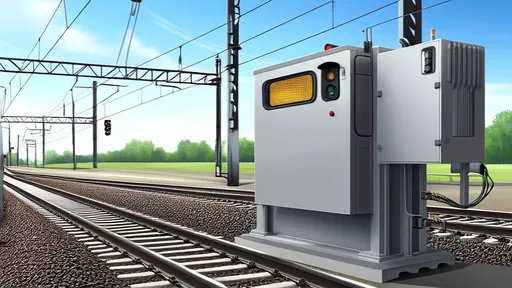The global food system is undergoing a quiet revolution, one fermentation tank at a time. In laboratories and production facilities around the world, scientists and entrepreneurs are harnessing the power of microalgae to create what many believe could become the protein source of the future. These microscopic photosynthetic organisms, grown in controlled fermentation environments, are demonstrating remarkable potential to address some of our most pressing nutritional and environmental challenges.
Microalgae represent one of nature's most efficient protein factories. Certain species like Chlorella and Spirulina can contain up to 70% protein by dry weight - nearly double the protein content of soybeans and triple that of beef. What makes these microorganisms particularly remarkable is their ability to produce this nutritional bounty while requiring just a fraction of the resources needed by traditional crops or livestock. They grow rapidly, doubling their biomass in as little as 24 hours, and can thrive in environments where conventional agriculture struggles.
The production process begins with carefully selected algal strains placed in specialized fermentation tanks. These controlled environments allow for precise regulation of temperature, light, pH, and nutrient supply - factors that dramatically influence both the growth rate and nutritional profile of the microalgae. Unlike open pond systems used for some algal cultivation, closed fermentation systems prevent contamination and enable year-round production regardless of external weather conditions.
Nutritionally, microalgae proteins stand out for their completeness. They contain all nine essential amino acids that humans must obtain from food, with amino acid profiles that often surpass plant-based alternatives like pea or rice protein. Many microalgae strains are particularly rich in branched-chain amino acids (BCAAs) crucial for muscle synthesis and repair. Beyond protein, these tiny organisms pack an impressive array of vitamins (including B12, rare in plant sources), minerals, antioxidants, and beneficial fatty acids like omega-3s.
The environmental advantages of microalgae protein production are equally compelling. Traditional livestock farming accounts for nearly 15% of global greenhouse gas emissions and occupies about 30% of the planet's ice-free land. In contrast, microalgae cultivation in fermentation tanks requires less than 1% of the land needed for equivalent protein production from beef. Water usage is similarly minimal - microalgae thrive in brackish or even wastewater that would be unsuitable for conventional agriculture.
From a production standpoint, the scalability of microalgae systems offers significant advantages. Fermentation tanks can be stacked vertically, enabling protein production in urban environments or regions with poor soil quality. The entire growth cycle - from inoculation to harvest - typically takes just 3-5 days, compared to months or years for animal protein sources. This rapid turnover allows for continuous production that can quickly respond to fluctuations in demand.
Several innovative companies are now bringing microalgae proteins to market in various forms. Some produce whole algal biomass as a nutritional supplement, while others isolate specific protein fractions for use in meat alternatives, dairy substitutes, or protein-fortified foods. The neutral flavor profile of many microalgae proteins makes them particularly versatile for food applications, unlike some plant proteins that carry strong tastes requiring masking.
The science behind microalgae optimization continues to advance rapidly. Researchers are employing techniques like adaptive laboratory evolution to enhance specific traits - increasing protein content, improving digestibility, or boosting specific nutrient levels. Genetic tools are being used not to create GMOs, but to better understand and selectively breed superior algal strains. Meanwhile, engineers are refining fermentation systems to improve energy efficiency and reduce production costs.
One particularly promising area of development involves mixotrophic cultivation, where microalgae utilize both photosynthesis and organic carbon sources. This hybrid approach can dramatically increase growth rates and protein yields compared to purely photosynthetic methods. Some systems are even being designed to capture industrial CO2 emissions as a feedstock for algal growth, creating a circular production model.
Despite these advantages, challenges remain in bringing microalgae proteins into the mainstream. Production costs, while falling, still exceed those of commodity plant proteins. Consumer acceptance represents another hurdle, though this is changing as awareness grows about the nutritional and environmental benefits. Regulatory frameworks for novel food ingredients also vary significantly by region, requiring careful navigation by producers.
The potential applications of microalgae proteins extend far beyond human nutrition. The aquaculture industry, facing sustainability challenges with traditional fishmeal, is increasingly turning to algal proteins as feed alternatives. Even the cosmetics and bioplastics industries are exploring microalgae derivatives as sustainable ingredients. This versatility suggests that what we're witnessing may be more than just a new protein source - it could be the emergence of an entirely new bioeconomy.
As climate change intensifies and global protein demand continues rising, microalgae's unique combination of nutritional density and environmental sustainability becomes ever more valuable. The coming decade will likely see fermentation tanks becoming as commonplace in food production as farmland is today. While microalgae may not completely replace traditional protein sources, they are poised to become a crucial part of a more diversified, resilient, and sustainable global food system.
Investment in microalgae technology has been accelerating, with both venture capital and major food corporations placing bets on algal protein's future. Production facilities scaling to hundreds of thousands of liters are already coming online, and industry projections suggest the microalgae protein market could grow tenfold by 2030. This growth mirrors patterns seen in previous food revolutions, like the rise of plant-based meats, but with potentially greater transformative power.
For consumers, the shift toward microalgae proteins may happen gradually but decisively. First appearing in specialty health products, then protein supplements, and eventually in everyday foods from pasta to protein bars. The story of microalgae represents more than just another alternative protein - it's about reimagining humanity's relationship with food production at its most fundamental level. In these unassuming fermentation tanks, we may be witnessing the birth of one of the 21st century's most important agricultural innovations.
The rhythmic lapping of brackish water against tangled mangrove roots conceals one of nature's most extraordinary genetic survival stories. For centuries, these salt-tolerant trees have guarded molecular secrets in their DNA that allow them to thrive where other plants perish. Today, scientists are cracking open this genetic vault through an ambitious international initiative called the Mangrove Gene Bank Project, with groundbreaking implications for global food security.
In the face of accelerating glacial melt due to climate change, scientists and engineers are turning to innovative solutions to slow the disappearance of these critical ice reserves. One such breakthrough is the development of high-albedo fabric covers, colloquially termed "glacial nanoblankets," designed to reflect sunlight and reduce ice ablation. These advanced textiles are emerging as a promising tool in the fight against rising sea levels and ecosystem disruption.
In the race to mitigate climate change, scientists and engineers are turning to the Earth’s own geological processes for solutions. One of the most promising avenues is basalt carbon mineralization, a natural chemical reaction that locks away carbon dioxide in solid rock. This process, often described as nature’s own carbon capture and storage (CCS) system, is now being harnessed and accelerated to combat rising atmospheric CO₂ levels. Unlike traditional carbon storage methods, which rely on fragile seals and uncertain long-term stability, basalt mineralization offers a permanent and geologically secure solution.
The concept of marine cloud brightening through aerosol seeding has emerged as a potential geoengineering strategy to combat global warming. By enhancing the reflectivity of clouds over oceans, scientists aim to increase Earth's albedo, thereby cooling the planet. This approach, while still in experimental stages, has garnered significant attention due to its promise of offsetting some effects of climate change without requiring drastic reductions in greenhouse gas emissions.
For decades, the study of chronic pain has been hampered by the inability to observe neural activity over extended periods. Traditional imaging techniques provide snapshots of brain activity but fail to capture the dynamic, evolving nature of pain processing. A groundbreaking approach using transparent skull implants is now revolutionizing our understanding of how chronic pain manifests and persists in the brain.
In the perpetual darkness of the deep sea, hydrothermal vents spew superheated, mineral-rich fluids into the frigid water, creating oases of extreme chemistry that have fascinated scientists for decades. These underwater geysers, often located along mid-ocean ridges, host complex reactions that may hold clues to the origins of life and the formation of mineral deposits. Until recently, studying these dynamic systems in their natural state posed immense challenges—until the advent of deep-sea chemical robots capable of in situ monitoring.
In a groundbreaking development that merges cutting-edge physics with ancient archaeology, researchers have successfully utilized neutron holography to reveal hidden inscriptions beneath the patina of bronze artifacts. This non-invasive technique promises to revolutionize the study of corroded metal objects, offering unprecedented access to historical texts without damaging delicate surfaces.
The advent of cryo-electron microscopy (cryo-EM) coupled with artificial intelligence (AI) has revolutionized the field of structural biology. By capturing the intricate dance of proteins in their native states, scientists are now able to unravel the dynamic architectures that govern cellular functions. This powerful synergy between cutting-edge imaging and machine learning is not just a technological leap—it’s a paradigm shift in understanding life at the molecular level.
The world of ultrafast spectroscopy has entered a revolutionary phase with the advent of attosecond spectral knives—a cutting-edge tool that enables scientists to selectively excite specific vibrational states in molecules. This breakthrough technology is reshaping our understanding of molecular dynamics and opening new frontiers in chemical reaction control. Unlike conventional methods that often excite molecules indiscriminately, attosecond spectral knives offer unprecedented precision by targeting individual quantum states with laser pulses lasting mere billionths of a billionth of a second.
The global food system is undergoing a quiet revolution, one fermentation tank at a time. In laboratories and production facilities around the world, scientists and entrepreneurs are harnessing the power of microalgae to create what many believe could become the protein source of the future. These microscopic photosynthetic organisms, grown in controlled fermentation environments, are demonstrating remarkable potential to address some of our most pressing nutritional and environmental challenges.
The agricultural sector is undergoing a quiet revolution as artificial intelligence merges with robotics to address one of nature's most vital processes: pollination. In fields across the world, experimental deployments of mechanical pollinator swarms are demonstrating how AI-driven vision systems can collaborate to mimic—and potentially enhance—the work of vanishing bee populations. These autonomous systems represent not just a technological breakthrough, but a necessary adaptation to ecological instability.
For decades, farmers and land reclamation specialists have struggled with the persistent challenge of saline-alkali soils - those unproductive lands where high salt concentrations and alkaline pH levels stunt plant growth and render vast areas agriculturally useless. Traditional remediation methods often proved either too slow, too expensive, or too water-intensive to implement at scale. Now, an innovative electrochemical approach using pulsed electric fields is demonstrating remarkable potential to transform these barren landscapes into fertile ground.
In the rolling hills of Colombia's coffee belt, a quiet revolution is taking place beneath the emerald canopies of coffee plants. Researchers are conducting groundbreaking field trials with genetically edited coffee plants designed to grow beans naturally low in caffeine. This ambitious project could forever change how the world consumes its most popular psychoactive beverage.
For centuries, the intricate world beneath our feet remained largely a mystery. Farmers, ecologists, and biologists could only speculate about the complex interactions between plant roots and soil structure. Traditional methods of studying root systems involved destructive sampling—digging up plants and washing away soil to examine roots. This approach not only killed the plants but also disrupted the very soil architecture researchers sought to understand. However, a quiet revolution in agricultural science is changing everything.
The concept of piezoelectric railways is revolutionizing the way we think about sustainable energy in transportation. By converting the mechanical energy from train-induced vibrations into electrical power, these systems offer a promising solution for reducing dependency on external power sources. The technology leverages piezoelectric materials, which generate electricity when subjected to mechanical stress, embedding them directly into railway tracks. This innovation not only enhances energy efficiency but also aligns with global efforts to combat climate change by minimizing carbon footprints.
